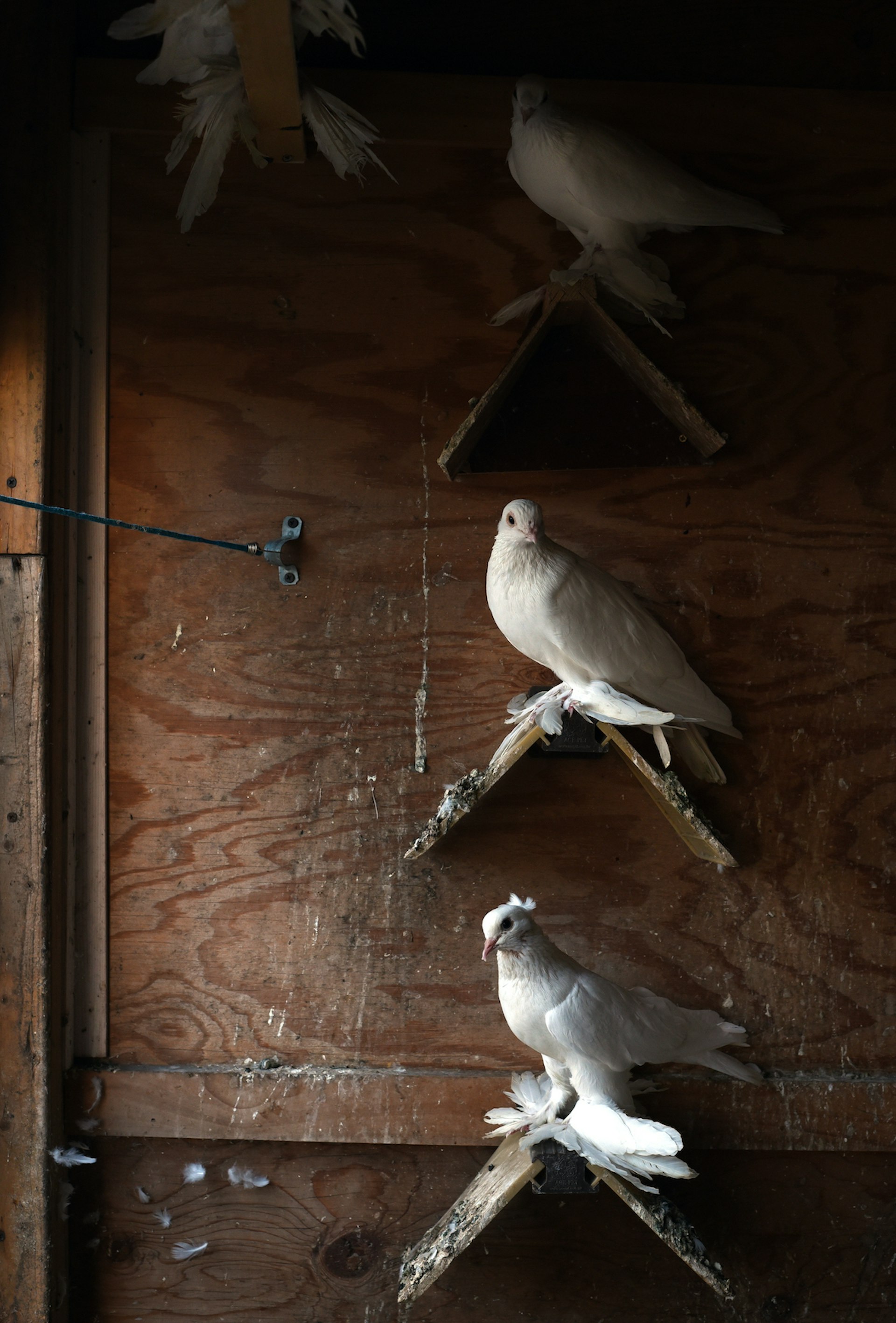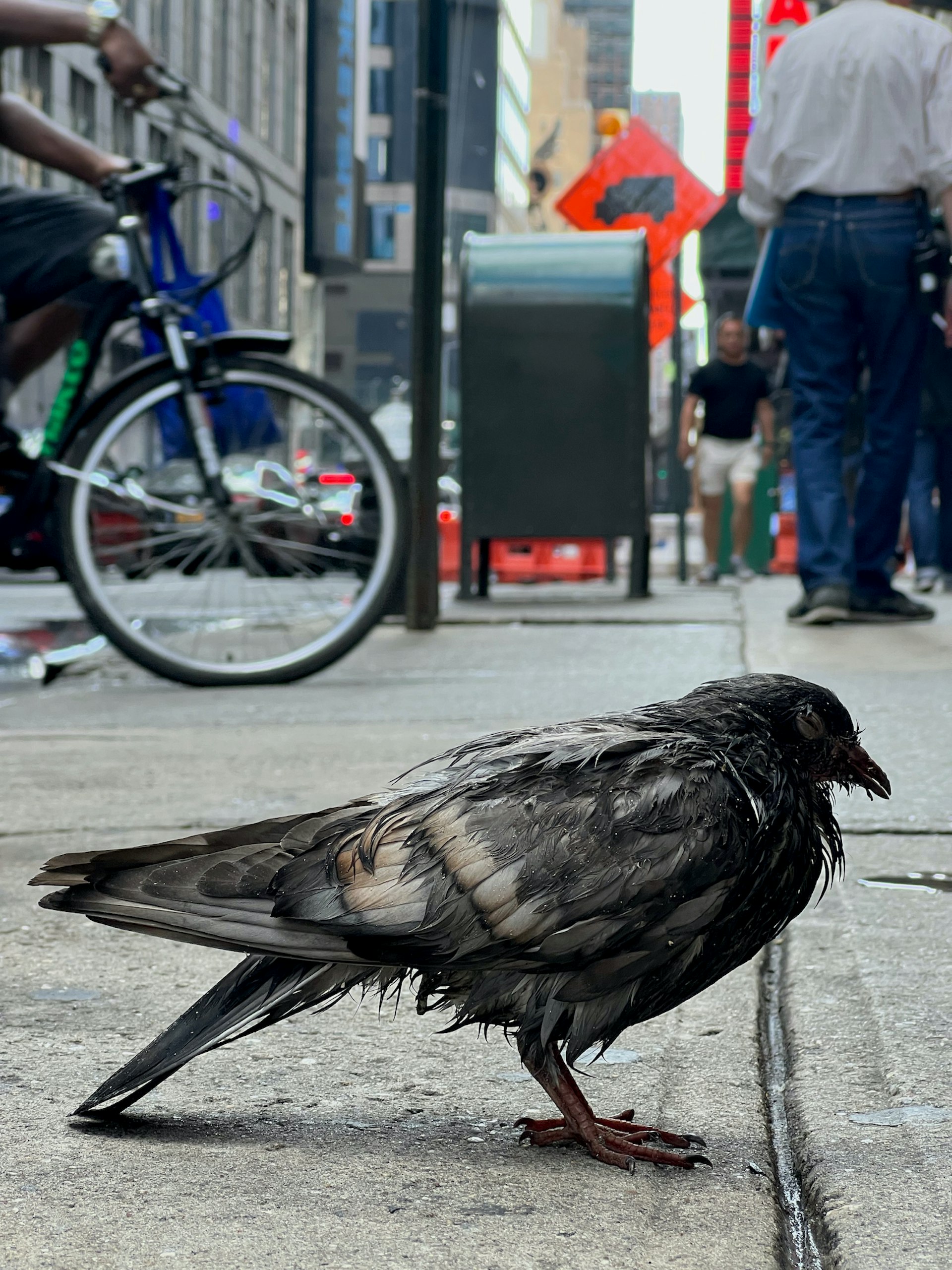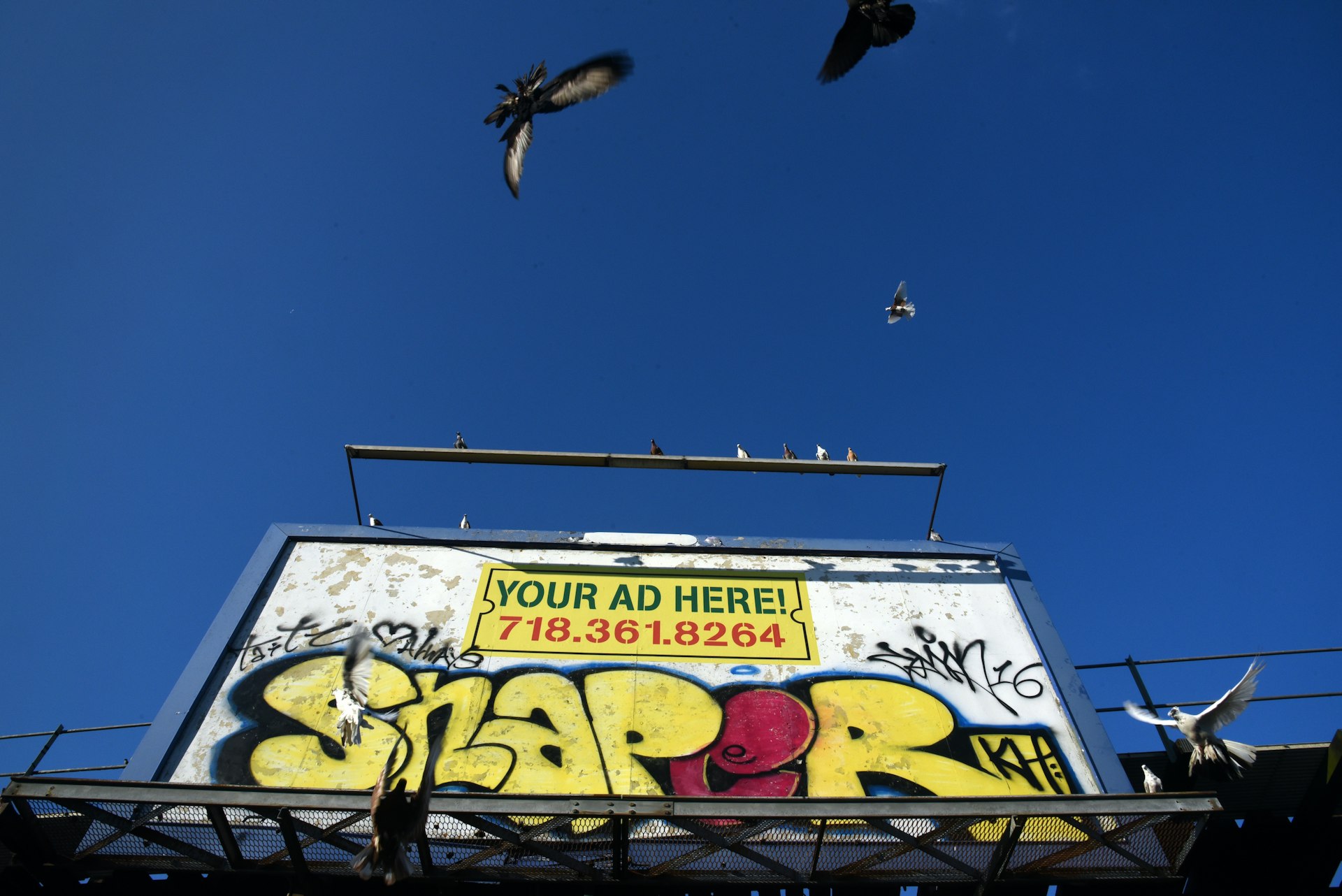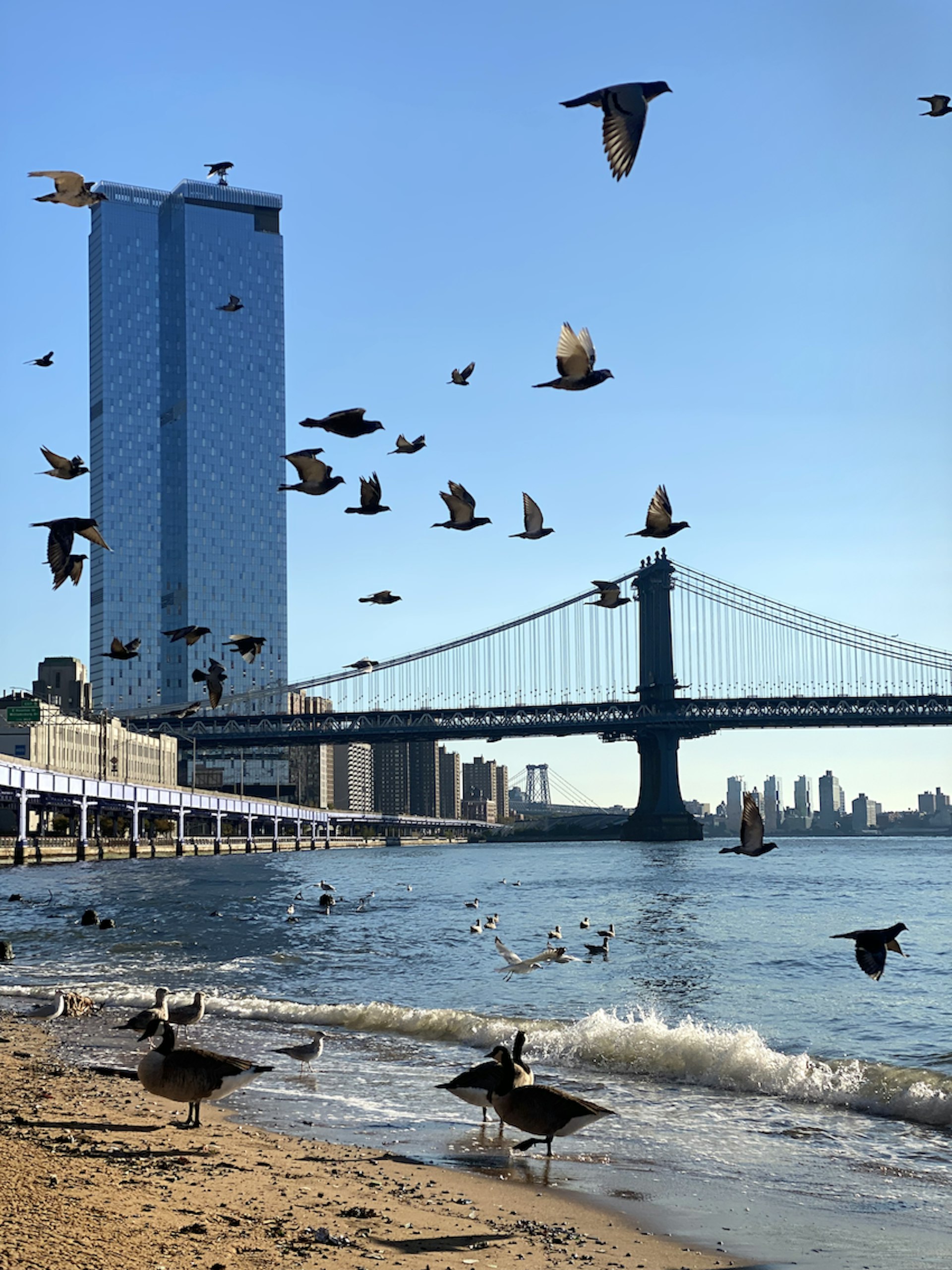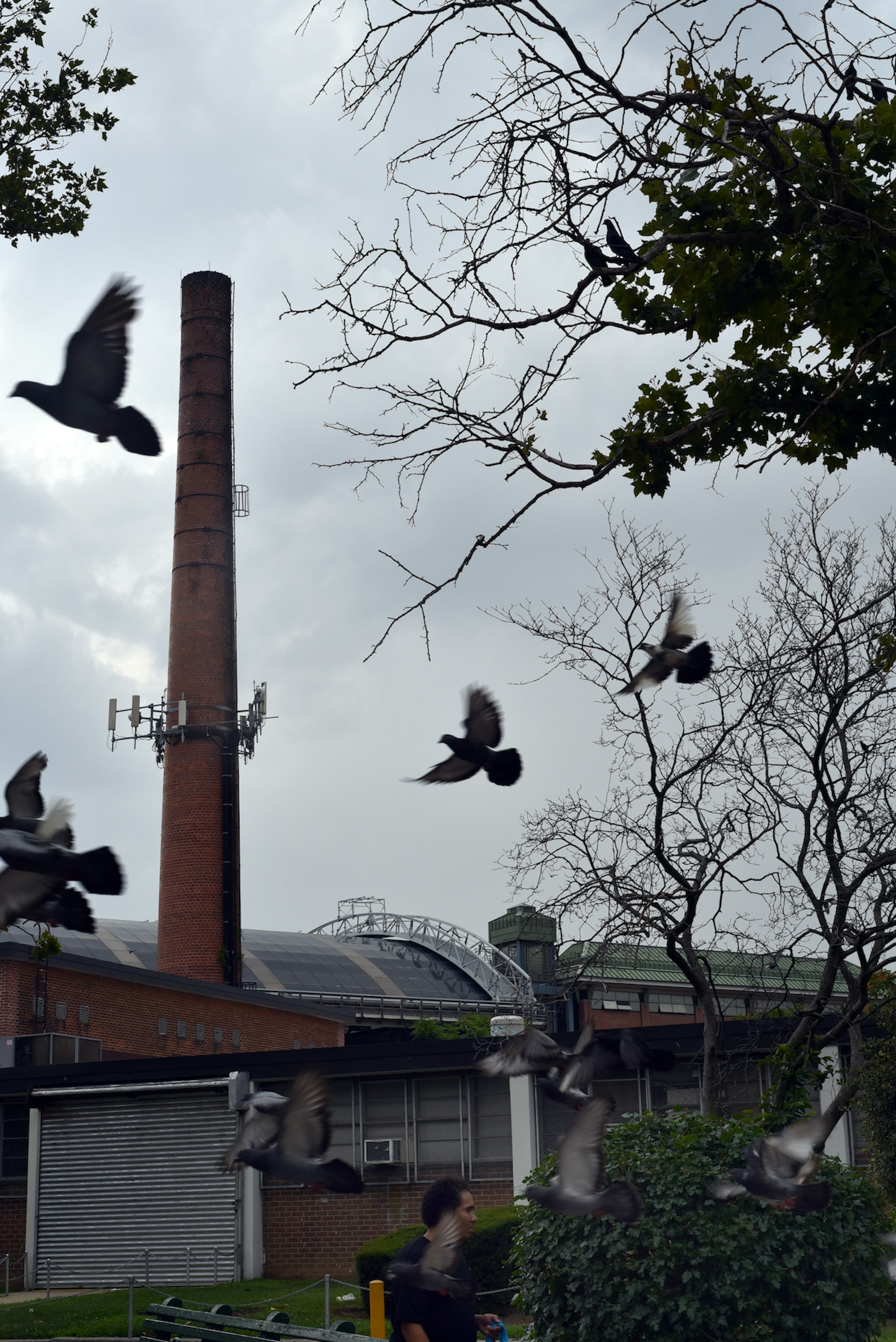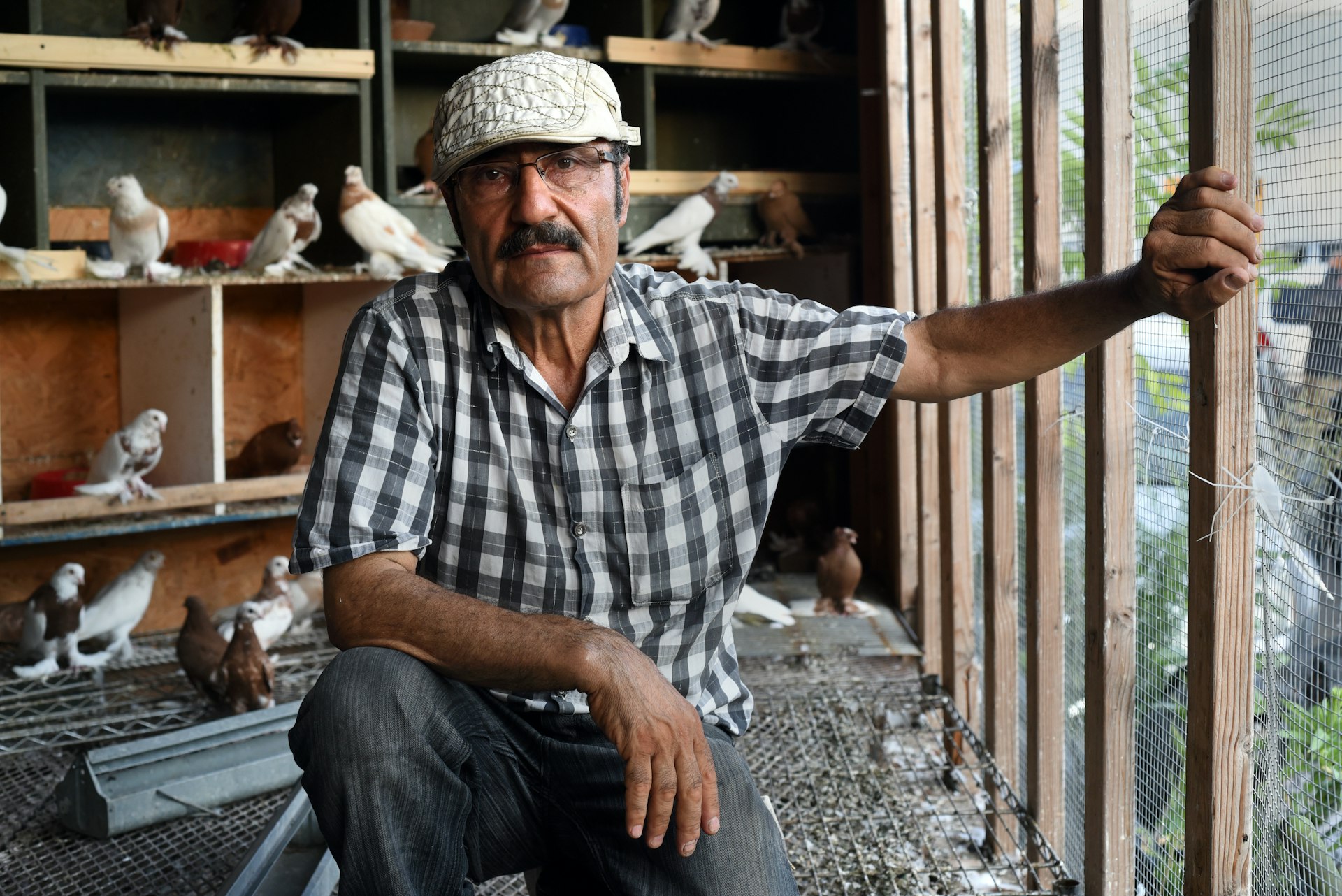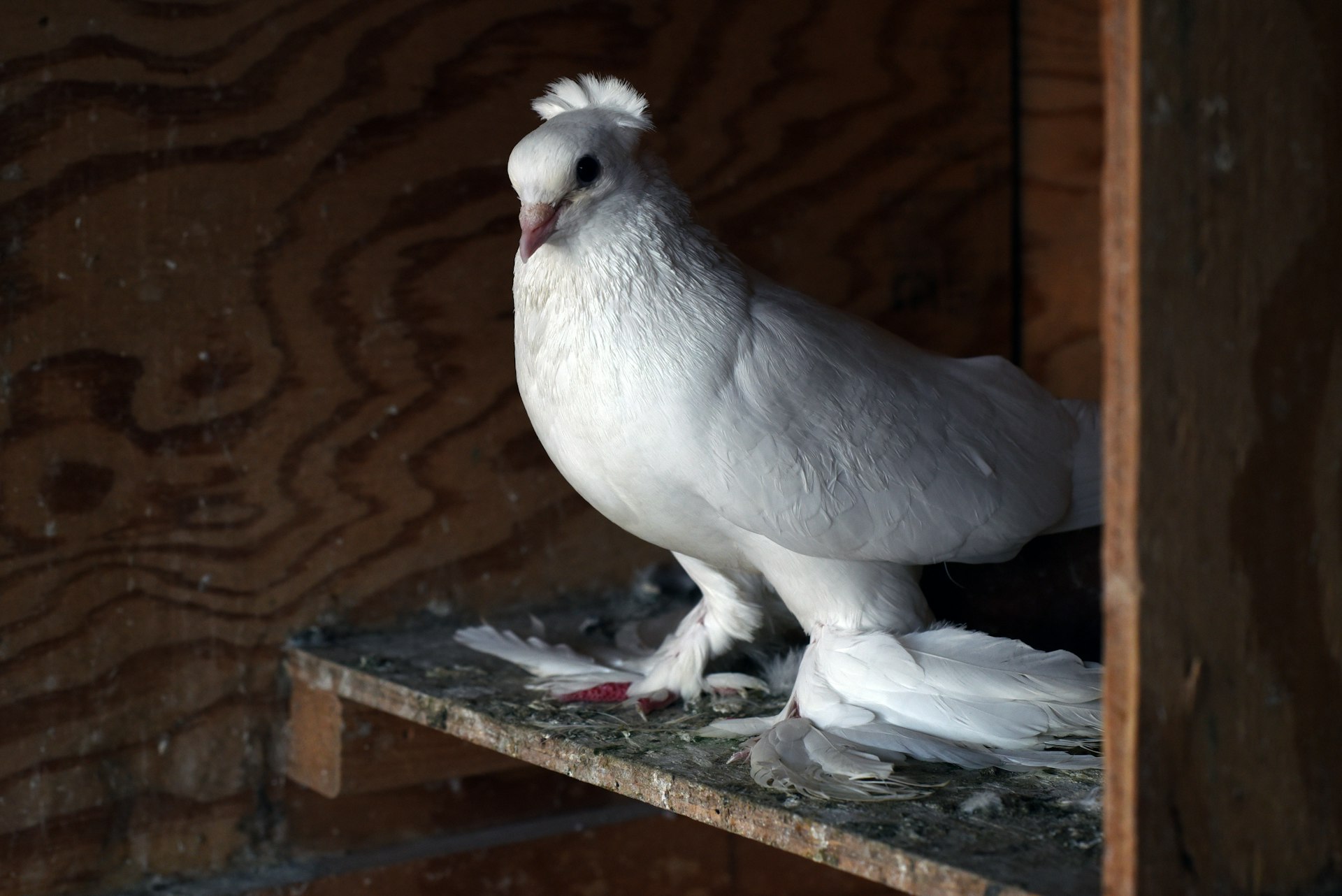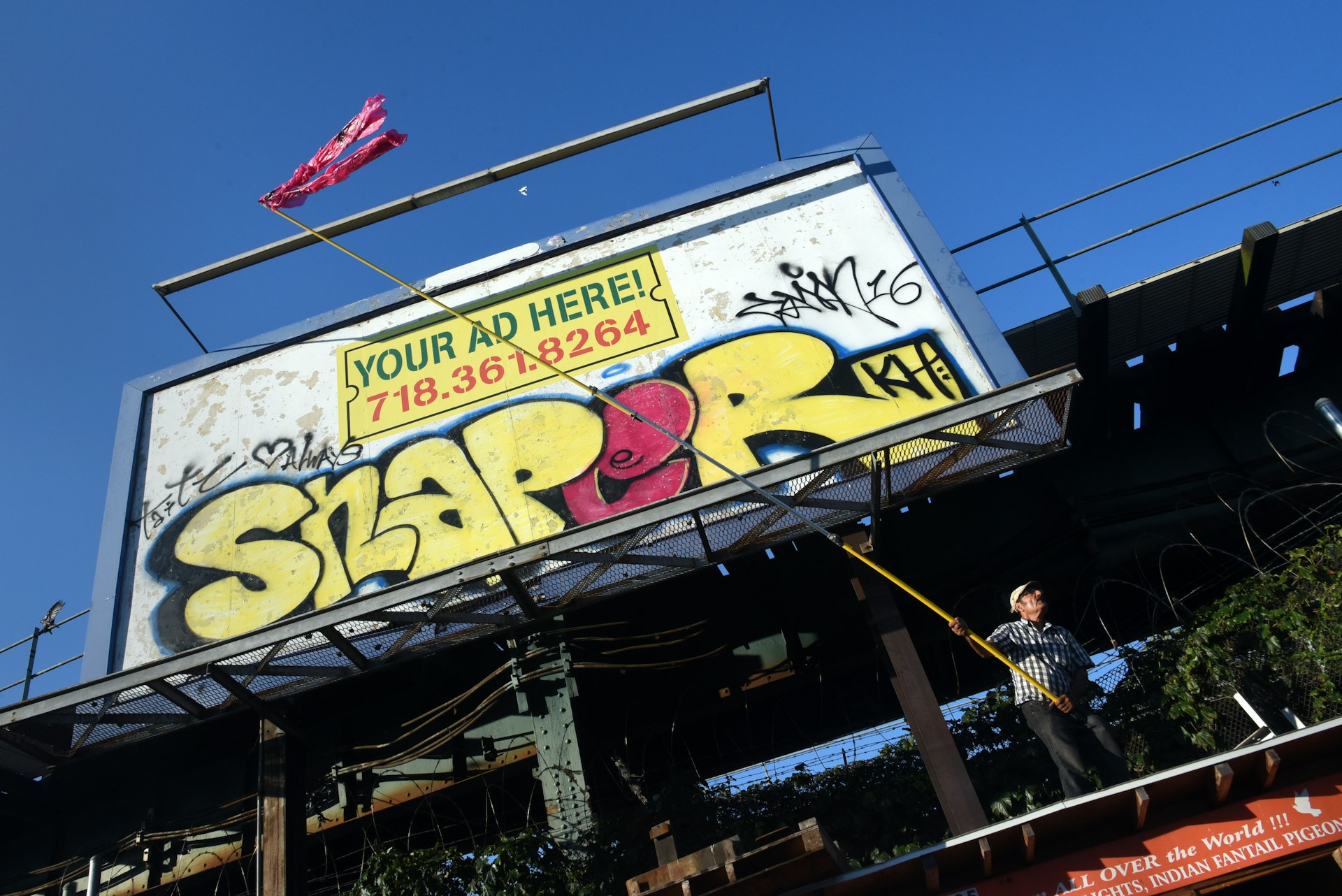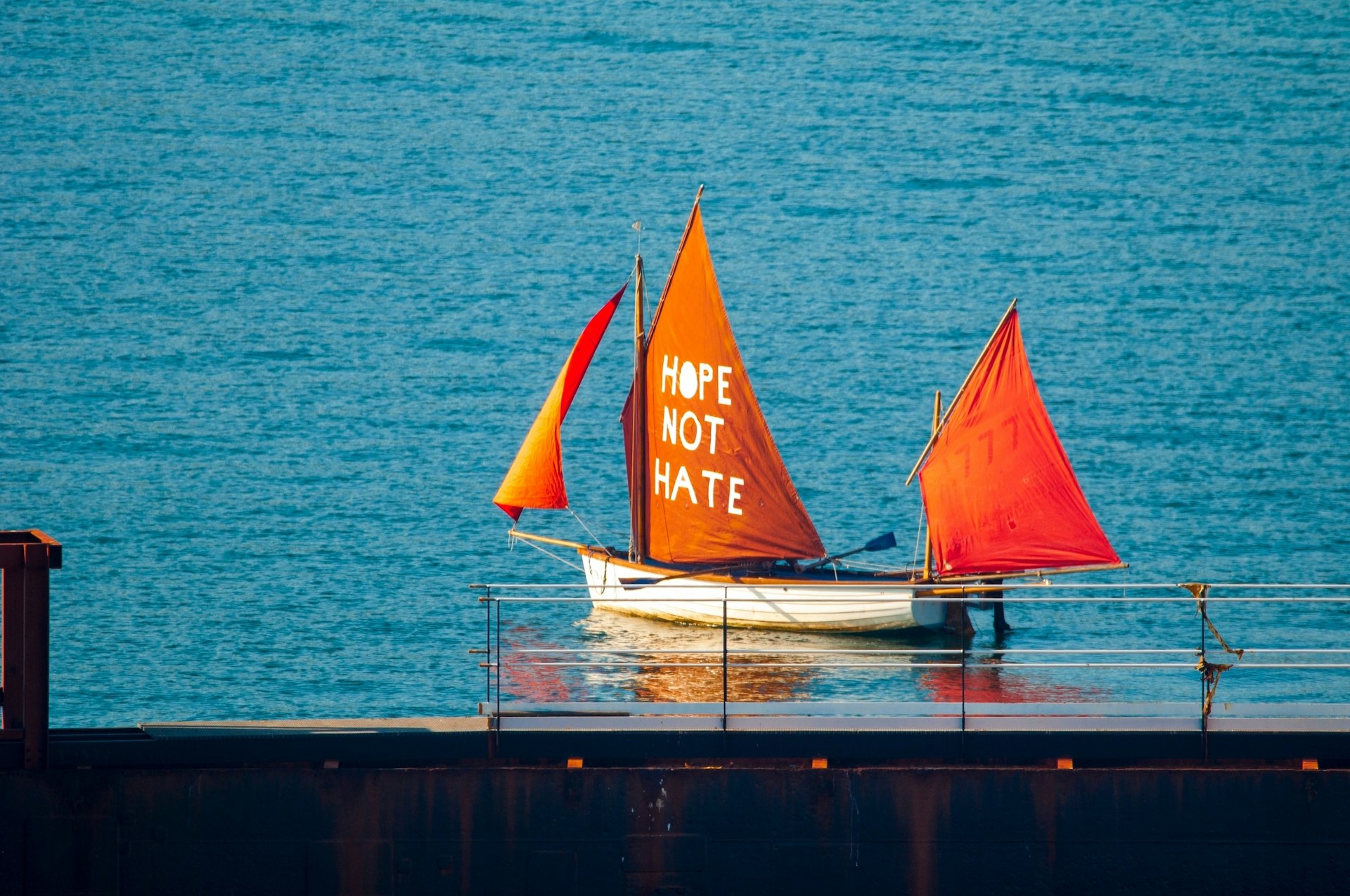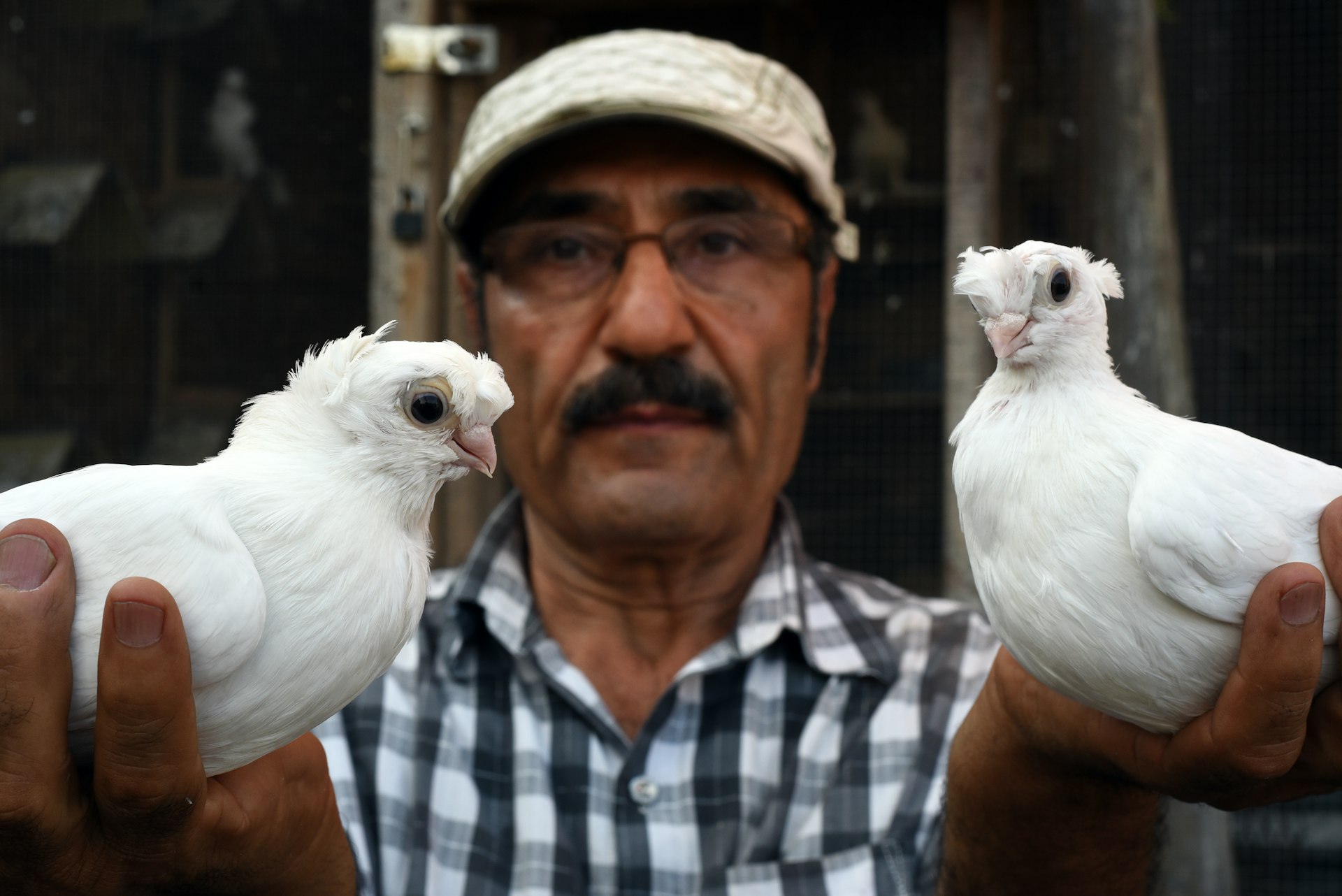
In photos: the last of New York’s pigeon racers
- Text by Isaac Muk
- Photography by Taylor Chapman
On one August afternoon seven years ago, Taylor Chapman was exploring the back streets of Coney Island – a seaside entertainment district at the southwest tip of Brooklyn. He was working on his End of the Line project, in which he documents life on the margins of New York City via the areas surrounding its subway terminals. After reading about a ‘graveyard of ships’ online, he scrambled through a hole in a fence next to a Home Depot parking lot to Coney Island Creek, where the remains of several centuries-old ships and submarines protrude from the mouth of the Hudson River.
“It’s a dead patch of water between Coney Island and the rest of Brooklyn, and it’s full of skeletons of ships – many of them supposedly from rum runners in the 20s and 30s who would smuggle whiskey from Canada and sell it through speakeasies,” Chapman says. “I thought this was a fascinating bit of history, so I was certainly in a mode where I was transported to an old New York, a more serious and strange New York, and a wilder New York.”
Feeling like something of a time traveller as he walked back towards his starting point, Chapman saw a curious building that halted him in his tracks. Attached onto the side of a house was a shuttered building with a green awning, marked with a fading, 20th century sign featuring two white birds and the words ‘Viola PIGEON CLUB’. It was the home of a once-iconic pigeon racing club, run by a man named Frank Viola (1920-2007). He was one of the sport’s leaders in its postwar heyday, organising races where people would drive their pigeons hundreds of miles away to Ohio before releasing their pigeons and seeing which bird was the first to return to the Big Apple. But he also played a key role in the Second World War, donating his birds to the military for use as homing pigeons to carry messages over enemy lines.
“I walked up, poked around, did a bit of Googling and found Frank Viola’s obituary in the New York Times, and when I read his life story it just blew my mind,” he recalls. “I was aware of Brooklyn’s pigeon racing culture in part because my friend was involved in [a documentary] about Mike Tyson and his passion for pigeons, so I knew this was an institution and I was fascinated to encounter it in the flesh.”
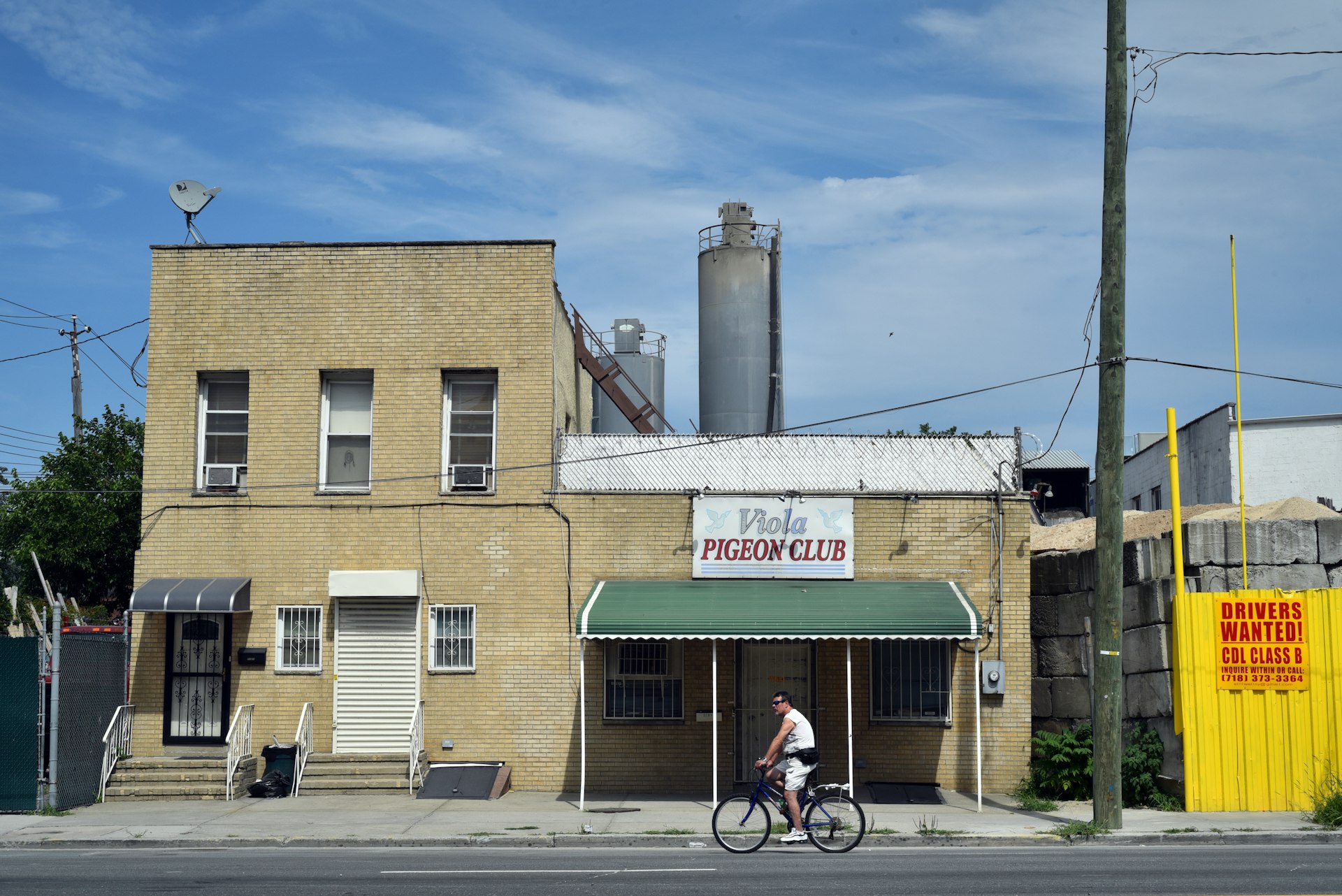
The journey wouldn’t end there. Around 300 metres away in the water’s direction, Chapman came across a car junkyard, which caught his eye for its wall of lush greenery decorated with shiny red and white jewels. Directly above it sat an expansive coop populated by hundreds of pigeons. It belonged to the junkyard’s owner Slavik Haimov – one of Brooklyn’s last remaining pigeon breeders. Haimov came to meet Chapman and explained in excited detail the different varieties of pigeon that he reared, and how he would sell them to other enthusiasts at Sunday auctions.
A shot of the Viola Pigeon Club and photographs from the time he spent with Haimov is now presented in Chapman’s photography series The Pigeon Men of Brooklyn. Featuring the junkyard’s jewels and young chicks among the photos, along with tender shots of Haimov caring for his pure-bred birds (NYT described comparing racing pigeons to street pigeons as “Secretariat to a Central Park carriage horse”), the pictures provide a glimpse into a dying activity. Pigeon rearing was once a common practice along New York City’s skyline – particularly among the working classes.

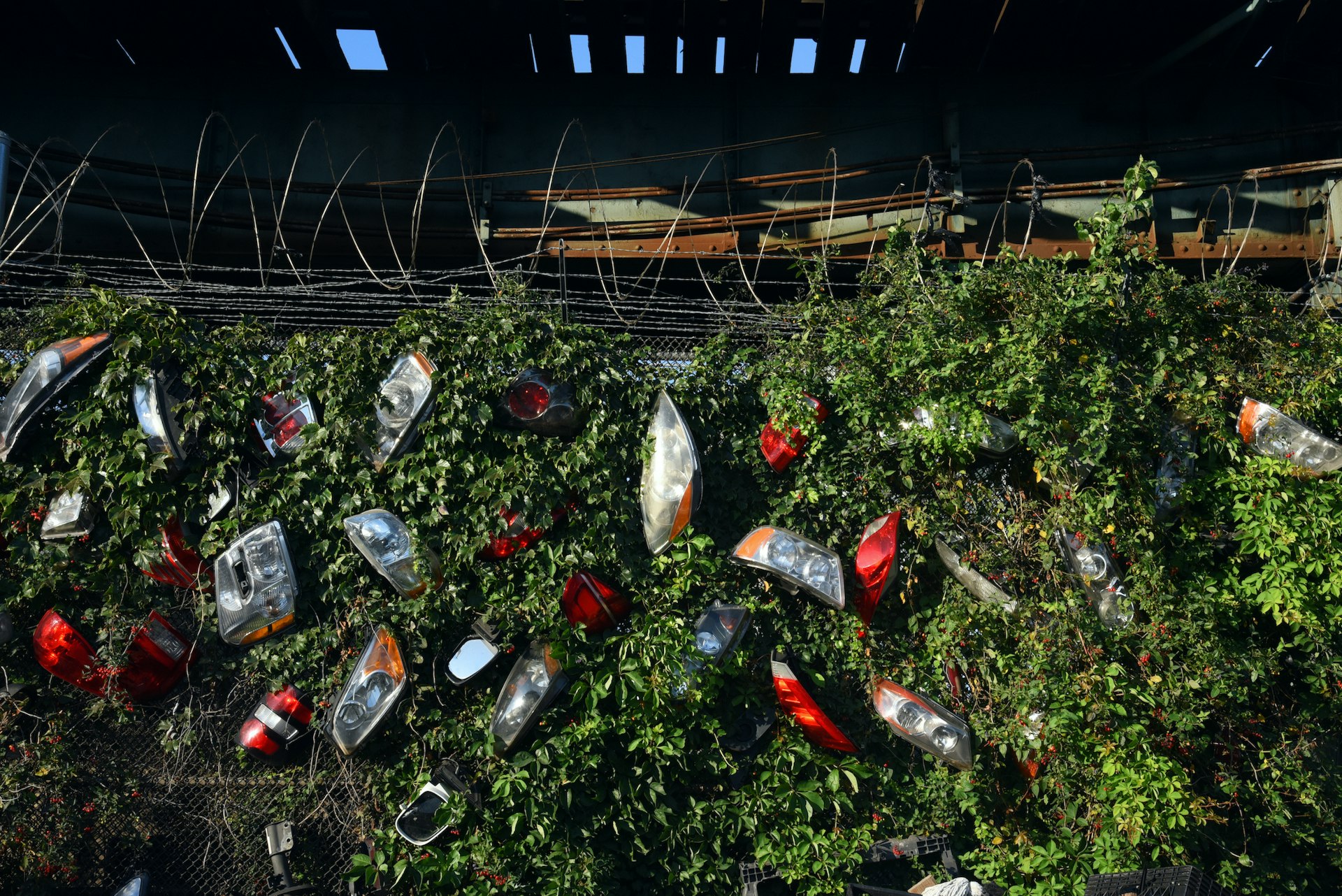
“One big reason is because of New York’s tenement culture,” he explains of its historical appeal. “Until very recently the rooftops of New York were not beautiful outdoor decks where you could barbecue or sunbathe – they were tar surfaces that would get extremely hot in summer where no one wanted to spend any time. But as a result they were free and one of the only places [where] if you were a family without a lot of resources, you could build something of your own.”
It’s why for those keeping the culture alive, it’s a passion. While showing off his birds to Chapman, Haimov climbed up onto the platform of a billboard, released his pigeons and waved a giant, five-metre long stick with a red rag attached to the end in a figure-of-eight motion. “The pigeons started swirling in these arcs above him and would obey him,” Chapman says. “They were almost like his children – the pride that he took in this subculture really touched me.
“One thing I love about finding someone’s hidden passion is how it reveals a different side to them,” he continues. “As a tow truck driver and junkyard owner he’s seen a lot of hard things – repossessed cars, accidents, destruction and squabbles. But the tenderness that he showed to these fragile, light birds and the way he talked about the various breeds, admired and loved them – it reminded me that we all contain multitudes.
The Pigeon Men of Brooklyn and other photography from the End of the Line can be seen at Taylor Chapman’s website and Instagram.
Follow Isaac on Twitter.
Enjoyed this article? Follow Huck on Twitter and Instagram.
